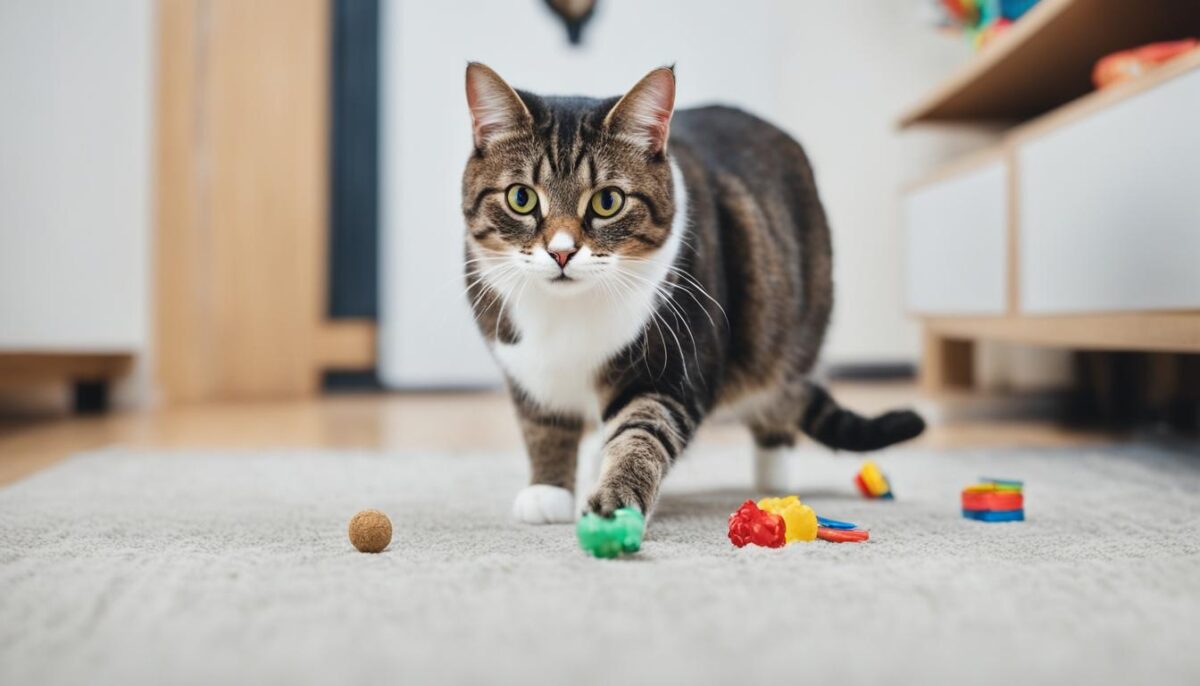Do you want your fur friend to be a responsive pet? It’s fun and helpful to have a cat that listens to you. If you want to go on animal adventure training or just stay safe at home, teaching your cat to come when you call is a great idea. You don’t need to be a pro at cat training! Start with simple tricks. If your cat comes running when they hear treat bags, you’ve got a head start. Use that trick to help them learn. When they come, give them a treat right away. Do this a lot, and they will learn to come even from far away. Remember, learning should be fun. Always be nice, and never call them for something they won’t like.
Key Takeaways
- Clicker training is a good start for teaching cat tricks.
- Use treats to make your cat come when you call.
- Be nice to your cat so they like learning new things.
- Keep your calls the same each time so your cat knows what you want.
- Have short training times a lot so your cat remembers what to do.
Understanding Your Cat’s Natural Behaviors
Have you ever wondered why your cat does certain things? It’s all about their natural instincts. Cats are born with these instincts that help them figure out the world. For example, they know the sound of a treat bag means something yummy is coming! You can use these instincts to help train your cat.
When you take your cat on an adventure outside or to a new place, you want them to listen to you. Adventure cats that know how to come when called are safer. This means you can enjoy your time together without worry!
Adventure Cat Training Essentials
If you’re thinking about taking your fluffy friend on an outdoor adventure, it’s important they know how to respond to you. To prepare, start with simple training games at home. Always remember to make it fun for them!
The Power of Clicker Training
Clicker training is a cool way to teach your cat. When you press the clicker and they do something right, they get a treat. Soon, they’ll know that click means “Good job!” This helps them learn new things, like coming when you call.
Cats Know Their Names
Guess what? Cats often recognize their feline names. When they hear their name, they think of good things like food and play. Use their name when you call them, and they’ll learn to come to you!
Learning about cat behavior makes it easier to train them. With some practice and patience, you’ll have a cat that loves to follow you on adventures!
Essential Reward Systems for Feline Training
When it comes to training your cat, using a reward-based training approach is not only kind but effective. Think of it like a game where your cat does something great and gets a prize. It’s a win-win! You just have to figure out what makes your kitty’s tail wag. Is it a yummy treat, a fun toy, or maybe a cuddle?
Positive reinforcement is all about giving your cat something they love to encourage the behaviors you want to see more often. This could be a treat, some playtime, or even a chin scratch. The trick is to make sure these rewards happen right after your cat does something good, like coming when called. This way, they’ll understand what they did to earn that tasty bit of kibble or affection.
Let’s talk about feline motivation. Every cat is different, so a treat that sends one kitty over the moon might just get a bored meow from another. It’s like some people love chocolate, and others would rather have chips. You have to find out what treat or toy is like chocolate for your cat.
If your furry friend isn’t super into food, there are still ways to motivate them! Maybe they would climb mountains for a game with a feather wand or treasure a good petting session. And while food can be a powerful motivator, treat systems should include different kinds of rewards. It keeps things exciting and helps your cat stay happy and healthy without getting too many treats!
Another big idea in cat behavior modification is to come up with a special sound or word that you don’t use all the time. When your cat hears this, they should know something awesome is coming. Start close by, call them with your special sound, and then give them their prize. As they get the hang of it, you can make it more of a challenge by calling them from farther away.
| Reward Type | When to Use | Benefits |
|---|---|---|
| Treats | When first teaching a new command | Quick and easy to give |
| Toys | For active playtime after a command | Encourages exercise and fun |
| Affection | Once your cat follows a command well | Strengthens your bond |
Finally, we don’t want our cats to only do the right thing because they think every time they will get a treat. The big goal is to have them listen because they’ve learned to trust and respect you. So, sometimes replace treats with just praise or a good cuddle session. It’s like telling your buddy, “Hey, you did awesome!” without always giving them a high five with candy.
How to Train a Cat to Come When Called
When you start training your cat, think about a special sound or word to call them. This will be their call sign. Use this every time you want your cat to come to you. It should be something easy to remember and fun to say!
Creating a Unique Call Sign
Choosing a call sign is the first step. It could be a nickname or a fun sound. Make sure it stands out from normal talking so your cat will notice it. When you pick one, stick with it to avoid confusion.
Establishing Positive Connections
After picking the call sign, use it when you give your cat a treat or their favorite toy. This helps your cat learn that good things happen when they hear their special sign. The training process is all about making happy memories for you and your feline buddy!
Gradually Increasing the Challenge
Start using the call sign when your cat is close by. When they come to you, give lots of love and a tasty treat. As they get better, test them from farther away and in different places. Don’t forget to reward them every time they do a good job. This builds trust and strengthens your bond.
It’s like a fun game of hide-and-seek that teaches them to listen for their special sign and come running. With practice, your cat will be a pro at the call command, listening for their sign and coming to you wherever you are!
Best Practices for Successful Cat Training
Hey there, cat friends! Training your furry buddy to come when you call them is like a fun game that you both can enjoy. It’s all about keeping things short and fun. Think of it as a mini-playdate – only about five minutes long. You can do this once or twice a day, so your cat stays excited and doesn’t get bored.
Keeping Sessions Short and Sweet
Just like people, cats learn better when they’re having a good time and not when they’re tired. So, remember to keep your training times short. Quick sessions help your cat stay alert and ready to learn without getting grumpy or sleepy. You’ll see how quickly your kitty picks up on what you’re teaching!
The Importance of Consistency and Patience
When you’re teaching your cat, you need to be like a friendly coach – always kind and doing things the same way. Use the same words and give them their favorite treats when they do things right. Be patient, because sometimes it takes a little while for them to understand what you’re saying, but they’re trying their best.
Dealing with Slow or Reluctant Responses
If your cat takes their sweet time or doesn’t come when you call at first, don’t worry. Keep giving them love and yummy snacks when they do come. And if your cat can’t hear, try using a light or stomping your foot to get their attention. Making learning fun and rewarding is the key to having a great time with your cat training adventure!
FAQ
How can I make cat training an enjoyable experience for my pet?
The key to an enjoyable training experience is to utilize reward-based training. Always use positive reinforcement, offering treats, toys, or affection when your cat performs the desired behavior. Keeping sessions short and engaging will help maintain your cat’s interest.
Are there any specific methods recommended by experts for training cats?
Yes, clicker training is highly recommended by animal trainers and the ASPCA. This method focuses on marking desirable behavior with a click sound, immediately followed by a reward, which helps the cat associate the behavior with positive outcomes.
Is it possible for a cat to learn its name and respond to it?
Absolutely! Cats are able to recognize their names and other familiar sounds. Use their name consistently and reward them when they react, to reinforce this recognition.
What kind of rewards should I use for my cat during training?
You can use a variety of rewards that your cat finds motivating. This can include treats, favorite toys, or even cuddles and strokes. The key is to immediately reward your cat after they respond to help form a positive connection with the behavior.
How can I create a unique call sign for my cat?
Choose a specific word, phrase, or sound that isn’t typically used in daily conversation. Consistently use this call sign during training and always follow it with a reward to build the association.
What should I do if my cat doesn’t respond to their call?
Patience is essential in this situation. Continue using positive reinforcement, and don’t resort to punishment. For non-responsive cats, especially those with hearing difficulties, try using visual cues or other sensory methods, such as vibrations on the floor.
How often should I conduct training sessions with my cat?
For successful cat training, aim for short but frequent training sessions. Ideally, train once or twice a day for about five minutes each to keep your cat’s attention and interest.


